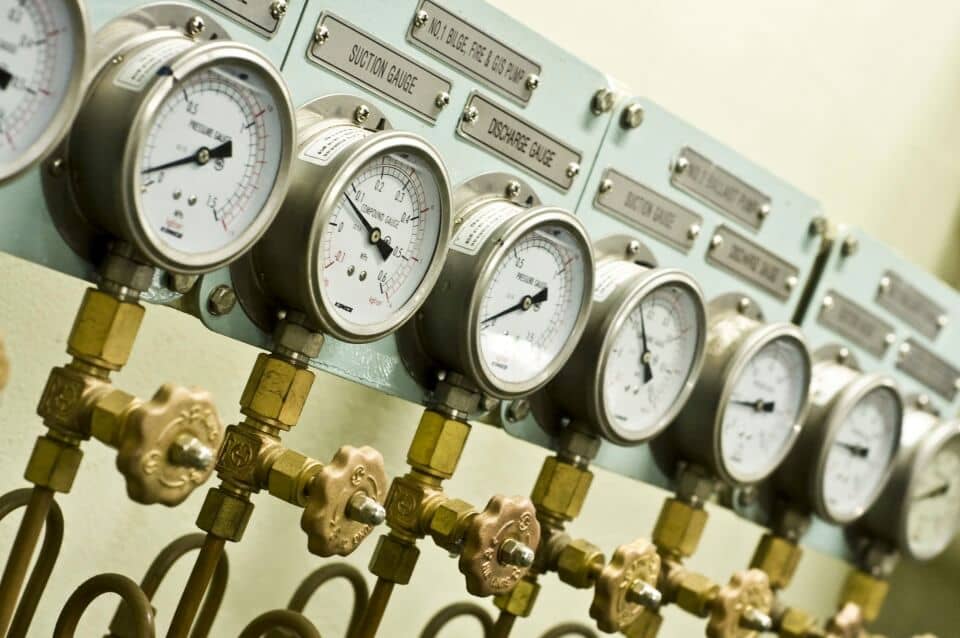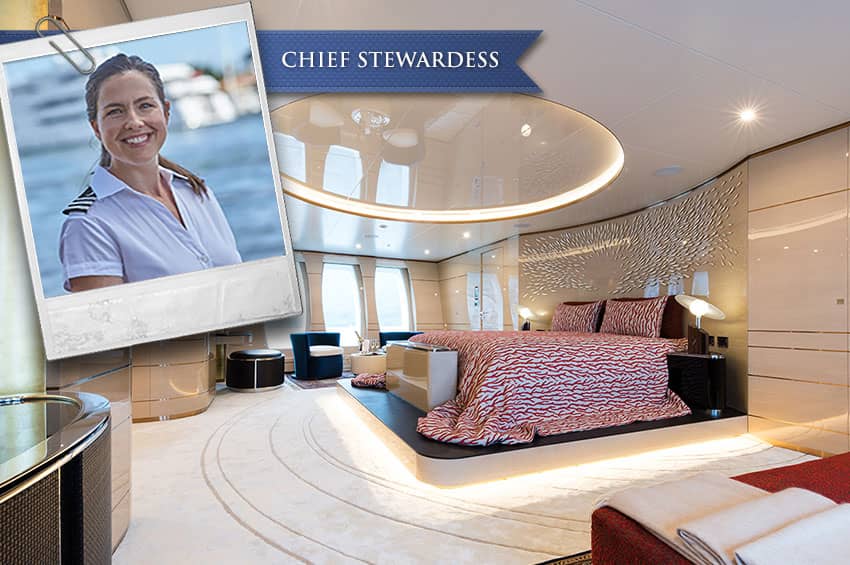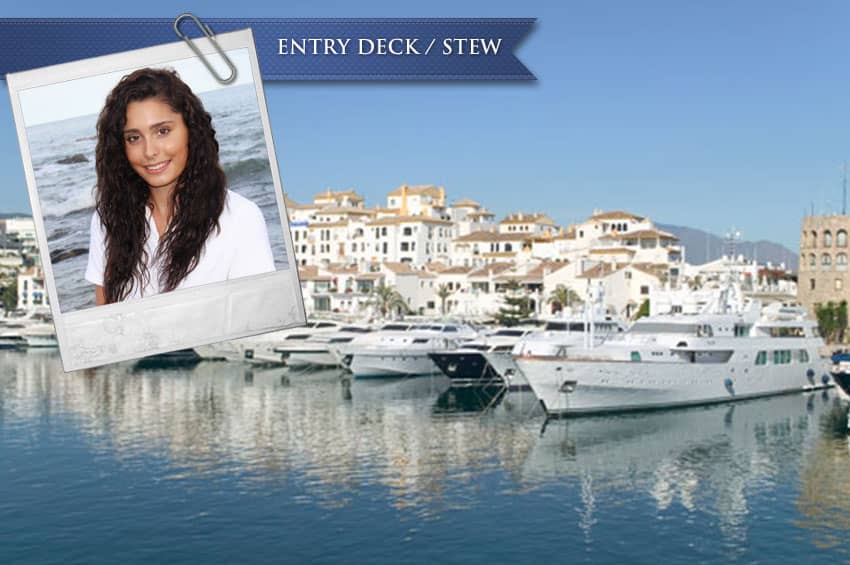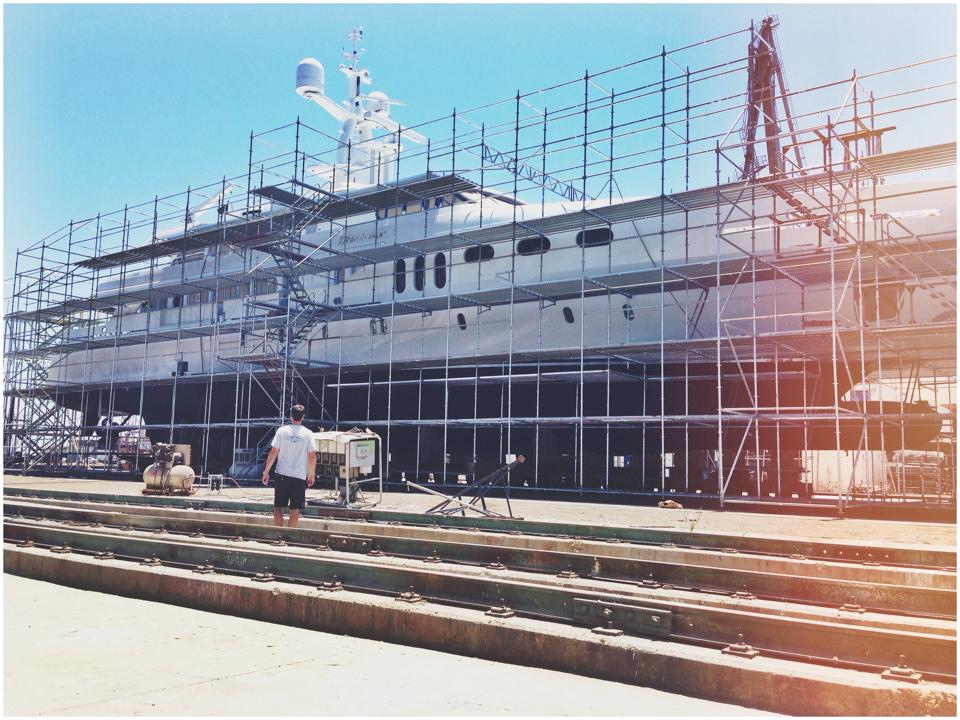Engineering License Changes

The MCA has restructured the engineering certifications. The MEOL course has been done away with, and the AEC course made mandatory and more thorough. Luxury Yacht Group explains all these changes, what engineers progressing through the ranks can do now, and how Y ticket holders can convert their licenses over to the structure.
"Holders of MCA Y licenses will have until 2021 to convert their current certificates to the Small Vessel Engineering license. Crew members taking Y3/Y2/Y1 oral examinations between now and then can request to be examined for a Small Vessel Engineering license instead of a Y3/Y2/Y1 license", says Ann Aylesworth, Manager of Student Services at MPT.
One of the main changes to the structure of the engineering courses will be the abolishment of the Marine Engine Operator License (MEOL), and new changes to the Approved Engine Course (AEC). The MEOL was a skills test that many felt was lacking in credibility.
The AEC course will now be split into two parts, namely Part I and Part II. The existing AEC will become AEC part I. The AEC part II will be a more in-depth course, with half of it focusing on practical tasks, and the other half theory. The two parts together will be known as the full AEC.
An exemption from the AEC will be available under the Accreditation of Prior Learning (APL) carried out by an MCA-approved training provider. They will compare your previous training and experience against the new syllabus and determine whether an exemption can be granted.
A conversion of existing Certificate of Competency (CoC) to Small Vessels (SV) CoC will be as follows, as taken from the MCA's website:
| UK Certificate Held | CoC Required | Conversion |
|---|---|---|
| Yacht 4 CoC (Y4) | Any Small Vessel Certificate of Competency | A1 – A3 |
| Yacht 3 CoC (Y3) | Chief Engineer SV less than 3,000 kW, less than 500 GT | B |
| Chief Engineer SV less than 9,000 kW, less than 3,000 GT | C | |
| Yacht 2 CoC (Y2) | Chief Engineer SV less than 9,000 kW, less than 3,000 GT | D |
| Yacht 1 CoC (Y1) | Chief Engineer SV less than 9,000 kW, less than 3,000 GT | E |
| EOOW unlimited area | Any SV Certificate of Competency | F1-F3 |
| Second Engineer (III/3) < 3,000 kW, unlimited area | Any SV Certificate of Competency | G1-G2 |
| Chief Engineer (III/3) < 3,000 kW, unlimited area | Any SV Certificate of Competency | H |
| Second Engineer (III/2) unlimited power/area | Chief Engineer SV less than 3,000 kW, less than 500 | I |
| Chief Engineer SV less than 9,000 kW, less than 3,000 GT | J |
Certificate of Competency
| Ancillary/Safety Course Certificate | III/2 Second Engineer | III/3 Chief Engineer | III/2 Chief Engineer | STCW Code Reference | Updating Required |
| Personal Survival Techniques | Yes | Yes | Yes | A-V1/1-1 | • |
| Fire Prevention and Fire Fighting | Yes | Yes | Yes | A-V1/1-2 | • |
| Elementary First Aid | Yes | Yes | Yes | A-V1/1-3 | |
| Personal Safety and Social Responsibility | Yes | Yes | Yes | A-V1/1-4 | |
| Proficiency in Survival Craft and Rescue Boats | Yes | Yes | Yes | A-V1/2 | • |
| Advanced Fire Fighting | Yes | Yes | Yes | A-V1/3 | • |
| Medical First Aid | Yes | Yes | Yes | A-V1/4-1 | |
| High Voltage (operational) | Optional | A-III-1 | |||
| High Voltage (management) | Optional | Optional | A-III/2 | ||
| HELM (operational) | Yes | A-III/1 | |||
| HELM (management) | Yes | Yes | A-III/2 |
Conversion A1
If you hold Y4 CoC, to obtain a SV Second Engineer less than 9,000 kW, less than 3,000 GT, unlimited area CoC you must:
- Complete six months sea going service on yachts of at least 350 kW while holding Y4 CoC OR pass the MCA oral examination for Second Engineer Officers on Small Vessels less than 9,000 kW, less than 3,000 GT, unlimited area, III/2 MCA oral examination.
- Hold the applicable ancillary and safety course certificates listed in Certificate of Competency table (above).
- Hold a valid ENG1 (medical fitness certificate) or accepted equivalent.
Conversion A2
If you hold Y4 CoC, to obtain a SV Chief Engineer less than 3,000 kW, less than 500 GT, unlimited area CoC, you must:
- Complete six months seagoing service on yachts of at least 350 kW while holding a Y4 CoC.
- Successfully complete the MCA-approved module and pass the corresponding written examination for Chief Engineer Statutory and Operational Requirements.
- Hold the applicable ancillary and safety course certificates listed in the Certificate of Competency table (above).
- Hold a valid ENG1 (medical fitness certificate) or accepted equivalent.
- Pass the MCA oral examination for Chief Engineer on Small Vessels less than 3,000 kW, less than 500 GT, unlimited area, III/2.
Conversion A3
If you hold Y4 CoC, to obtain a SV Chief Engineer less than 9,000 kW, less than 3,000 GT CoC, unlimited area, you must:
- While holding a Y4 Certificate of Competency complete six months seagoing service on a yacht of at least 350 kW which includes a minimum of three months service on yacht of 750 kW or more in power.
- Successfully complete the MCA-approved modules and pass the corresponding written examinations for:
- Chief Engineer Statutory and Operational Requirements.
- Applied Marine Engineering.
- General Engineering Science I & II.
- Hold the applicable ancillary and safety course certificates listed in the Certificate of Competency table (above).
- Hold a valid ENG1 (medical fitness certificate) or accepted equivalent.
- Pass the MCA oral examination for Chief Engineer on Small Vessels less than 9,000 kW, less than 3,000 GT, unlimited area, III/2.
Conversion B
If you hold Y3 CoC, to obtain a SV Chief Engineer less than 3,000 kW, less than 500 GT, unlimited area Coc, you must:
- Hold the applicable ancillary and safety course certificates listed in the Certificate of Competency table (above).
- Hold a valid ENG1 (medical fitness certificate) or accepted equivalent.
Conversion C
If you hold Y3 CoC, to obtain a SV Chief Engineer less than 9,000 kW, less than 3,000 GT CoC, unlimited area, you must:
- Complete six months seagoing service while holding Y4 CoC, or 3 months seagoing service while holding Y3 CoC. Six months of this seagoing service must be completed on yachts of at least 750 kW and the remainder on yachts of 350 kW or more in power.
- Successfully complete the MCA-approved modules and pass the corresponding written examinations for:
- SQA General Engineering Science I and II
- SQA Applied Marine Engineering
- Hold the applicable ancillary and safety course certificated listed in the Certificate of Competency table (above).
- Hold a valid ENG1 (medical fitness certificate) or accepted equivalent.
- Pass the MCA oral examination for Chief Engineer on Small Vessels less than 9,000 kW, less than 3,000 GT, unlimited area, III/2.
Conversion D
If you hold Y2 CoC, to obtain a SV Chief Engineer less than 9,000 kW, less than 3,000 GT CoC, unlimited area you must:
- Complete three months seagoing service on yacht of at least 750 kW while holding Y2 Certificate of Competency.
- Hold the applicable ancillary and safety course certificates listed in the Certificate of Competency table (above).
- Hold a valid ENG1 (medical fitness certificate) or accepted equivalent.
- Pass the MCA oral examination for Chief Engineer on Small Vessels less than 9,000 kW, less than 3,000 GT, unlimited area, III/2.
Conversion E
If you hold Y1 CoC, to obtain a SV Chief Engineer less than 9,000 kW, less than 3,000 GT CoC, unlimited area you must:
- Hold the applicable ancillary and safety course certificated listed in the Certificate of Competency table (above).
- Hold a valid ENG1 (medical fitness certificate) or accepted equivalent.
Conversion F1
If you hold an EOOW unlimited, III/1 CoC, to obtain a SV Second Engineer less than 9,000 kW, less than 3,000 GT CoC, unlimited area you must:
- Hold the applicable ancillary and safety course certificate listed in the Certificate of Competency table (above).
- Hold a valid ENG1 (medical fitness certificate) or accepted equivalent.
Conversion F2
If you hold an EOOW unlimited, III/1 CoC, to obtain a SV Chief Engineer less than 3,000 kW, less than 500 GT CoC, unlimited area you must:
- Complete six months seagoing service while holding EOOQ III/1 CoC on vessel of at least 350 kW.
- Successfully complete the MCA-approved modules and pass the corresponding written examinations for:
- Auxiliary Equipment
- Applied Marine Engineering
- Hold the applicable ancillary and safety course certificates listed in the Certificate of Competency table (above).
- Hold a valid ENG1 (medical fitness certificate) or accepted equivalent
- Pass the MCA oral examination for Chief Engineer on Small Vessels less than 3,000 kW, less than 500 GT, unlimited area, III/2.
Conversion F3
If you hold an EOOW unlimited, III/1 CoC, to obtain a SV Chief Engineer less than 3,000 kW, less than 500 GT CoC, unlimited area you must:
- Complete 12 months seagoing service whilst holding EOOW CoC on vessels of at least 750 kW
- Successfully complete the MCA-approved modules and pass the corresponding written examinations for:
- Auxiliary Equipment
- Applied Marine Engineering
- General Engineering Science I & II
- Chief Engineer Statutory and Operational Requirements
- Hold the applicable ancillary and safety course certificates listed in the Certificate of Competency table (above).
- Hold a valid ENG1 (medical fitness certificate) or accepted equivalent
- Pass the MCA oral examination for Chief Engineer on Small Vessels less than 9,000 kW, less than 3,000 GT, unlimited area, III/2.
Conversion G1
If you hold a Second Engineer less than 3,000 kW, unlimited area CoC, to obtain a SV Chief Engineer less than 3,000 kW, less than 500 GT, unlimited area CoC and Second Engineer less than 9,000 kW, less than 3,000 GT CoC, unlimited CoC, you must:
- Hold the applicable ancillary and safety course certificates listed in the Certificate of Competency table (above).
- Hold a valid ENG1 (medical fitness certificate) or accepted equivalent.
Conversion G2
If you hold a Second Engineer less than 3,000 kW, unlimited area CoC, to obtain a SV Chief Engineer less than 9,000 kW, less than 3,000 GT CoC, unlimited area you must:
- Have completed eight months seagoing service in full charge of the watch on vessels of at least 750 kW
- Hold the applicable ancillary and safety course certificates listed in the Certificate of Competency table (above).
- Hold a valid ENG1 (medical fitness certificate) or accepted equivalent.
- Pass the MCA oral examination for Chief Engineer on Small Vessels less than 9,000 kW, less than 3,000 GT, unlimited area, III/2.
Conversion H
If you hold a Chief Engineer less than 3,000 kW, unlimited area CoC, to obtain a SV Chief Engineer less than 9,000 kW, less than 3,000 GT CoC, unlimited area, you must:
- Hold the applicable ancillary and safety course certificates listed in the Certificate of Competency table (above).
- Hold a valid ENG1 (medical fitness certificate) or accepted equivalent.
Conversion I
If you hold a Second Engineer unlimited, III/2 CoC, to obtain a SV Chief Engineer less than 3,000 kW, less than 500 GT CoC, unlimited area, you must:
- Hold the applicable ancillary and safety course certificates listed in the Certificate of Competency table (above).
- Hold a valid ENG1 (medical fitness certificate) or accepted equivalent.
Conversion J
If you hold a Second Engineer unlimited, III/2 CoC, to obtain a SV Chief Engineer less than 9,000 kW, less than 3,000 GT CoC, unlimited area, you must:
- Hold the applicable ancillary and safety course certificates listed in the Certificate of Competency table (above).
- Hold a valid ENG1 (medical fitness certificate) or accepted equivalent.
- Pass the MCA oral examination for Chief Engineer on Small Vessels less than 9,000 kW, less than 3,000 GT, unlimited area, III/2.
The information above is taken directly from the Maritime Coastguard Agency's Marine Information Note, and all parts relevant to superyacht crew have been highlighted. The changes are positive, allowing Certificates of Competency to be interchangeable between licensing categories, enabling engineers to climb through the ranks more quickly.
Additionally, the MCA is allowing some sea service requirement time (up to 25% of it) to be counted at the dock, on anchor or in the ship yard. Days underway at sea will now be counted as 1.5 days of sea service.
It is recommended that engineering crew start the conversation about these changes with their training schools to ensure that any courses they take going forward complies with the new structure and licensing program.
For any questions, please feel free to contact Luxury Yacht Group at rc@luxyachts.com
 Sales
Sales
 Charter
Charter
 Management
Management
 Crew
Crew
 About Us
About Us
 Contact Us
Contact Us
 Newsroom
Newsroom


